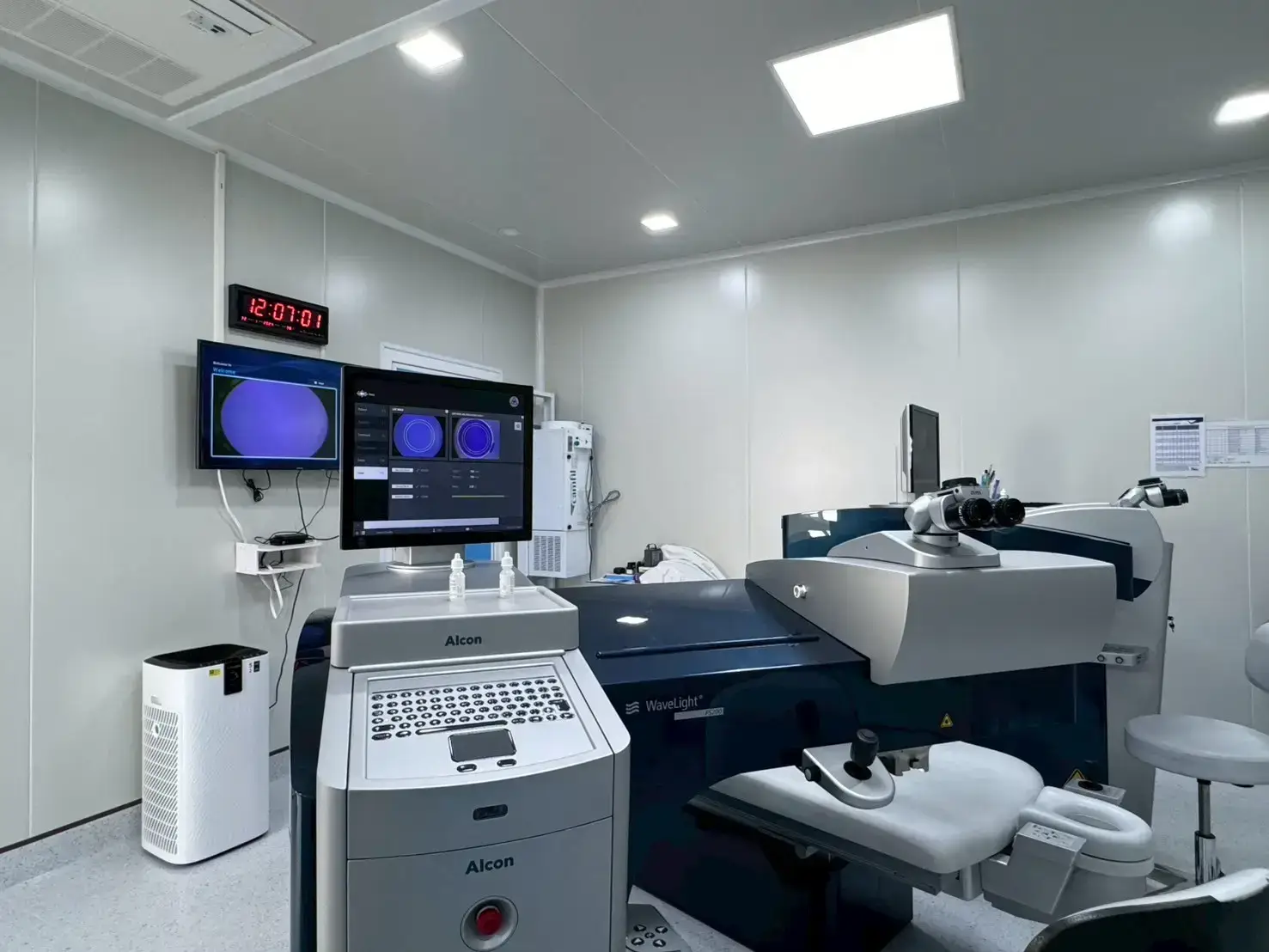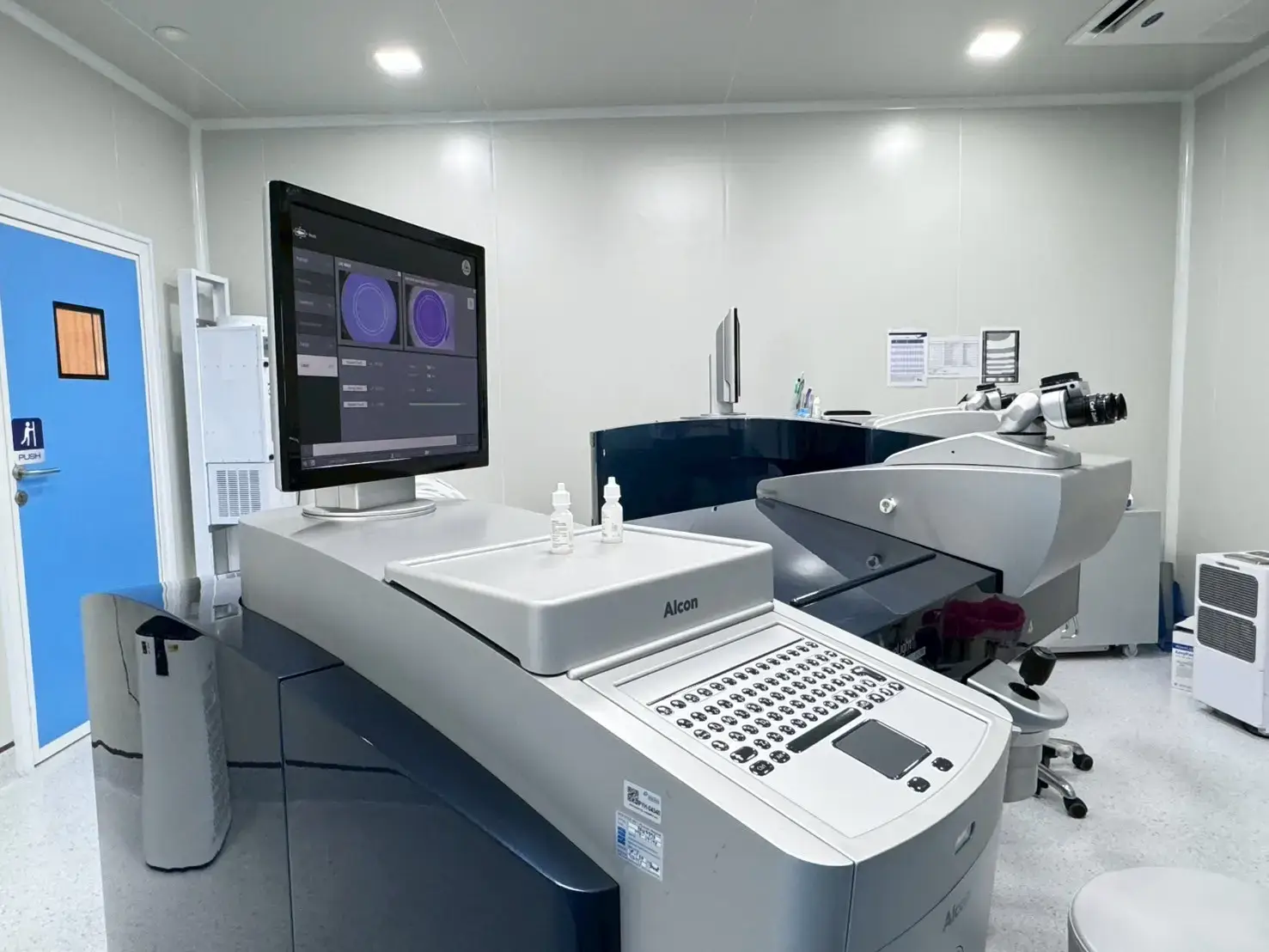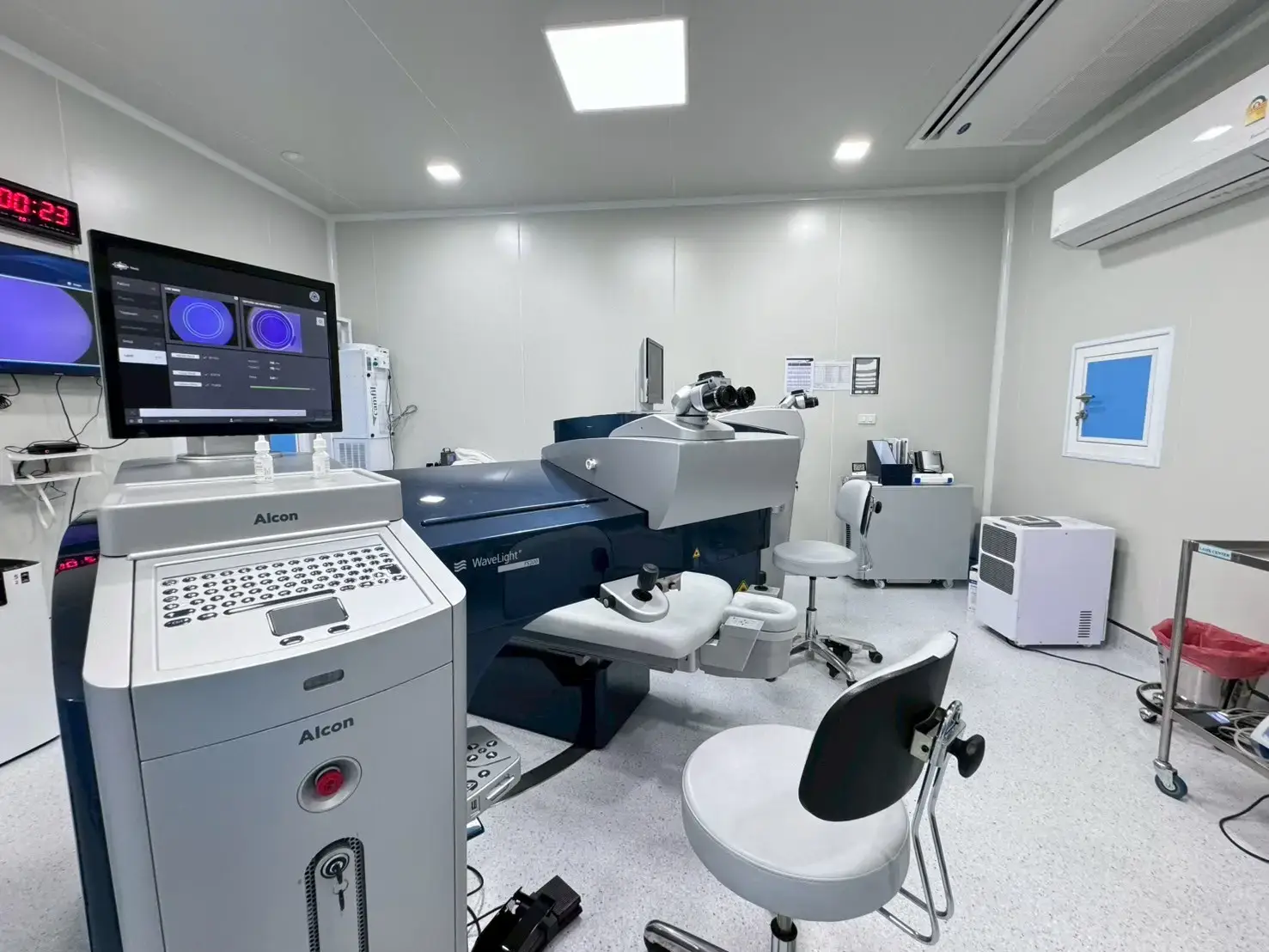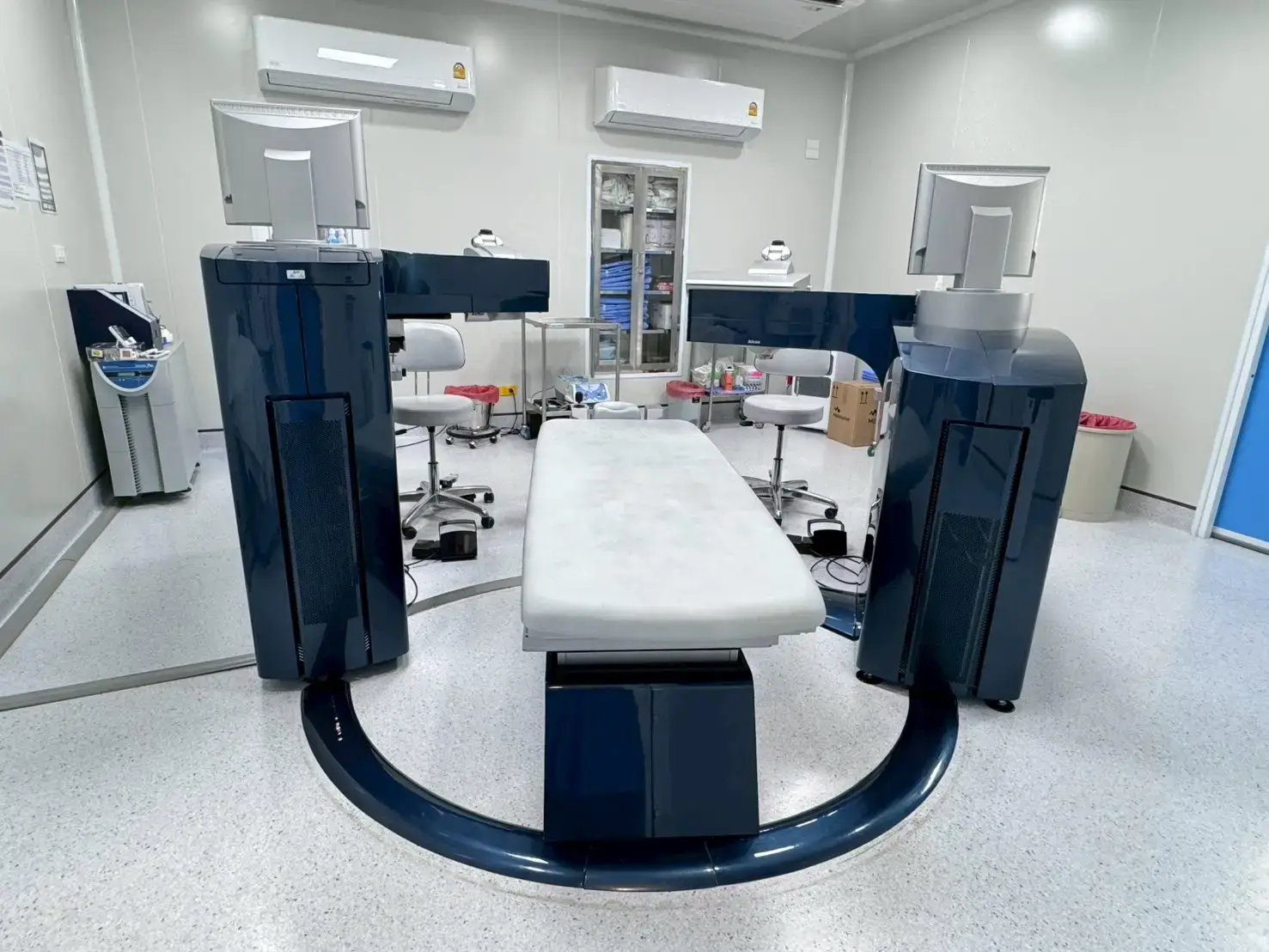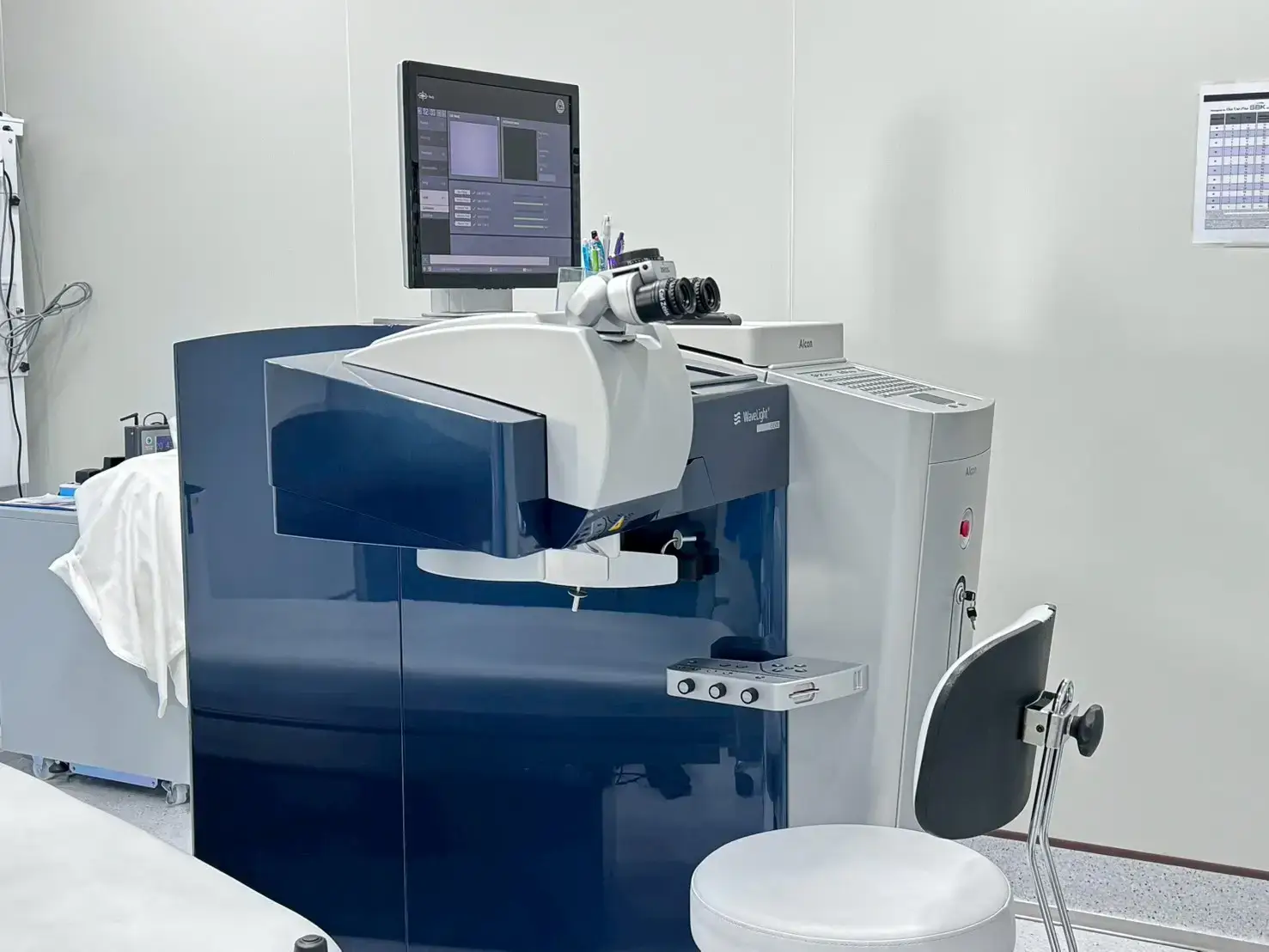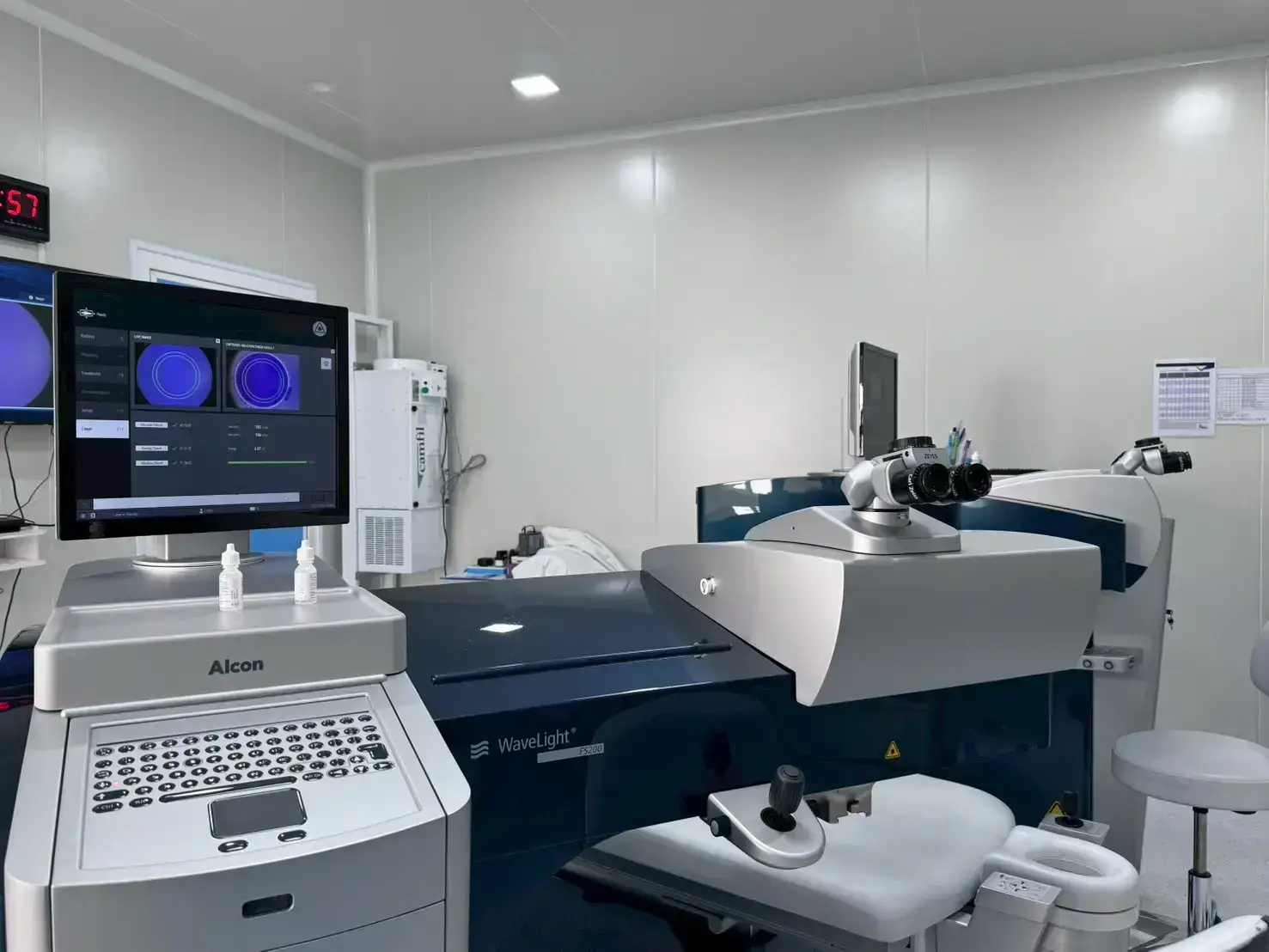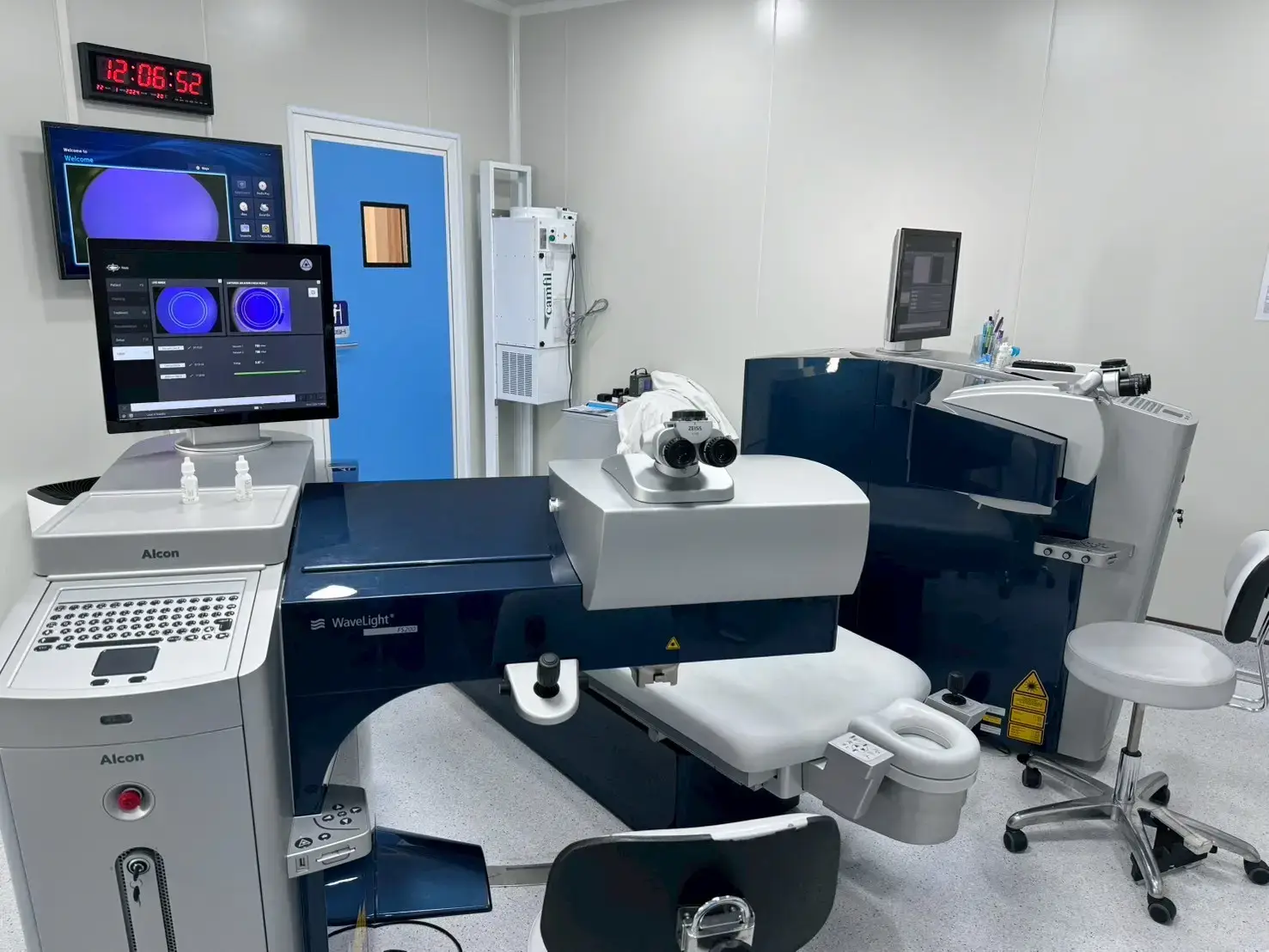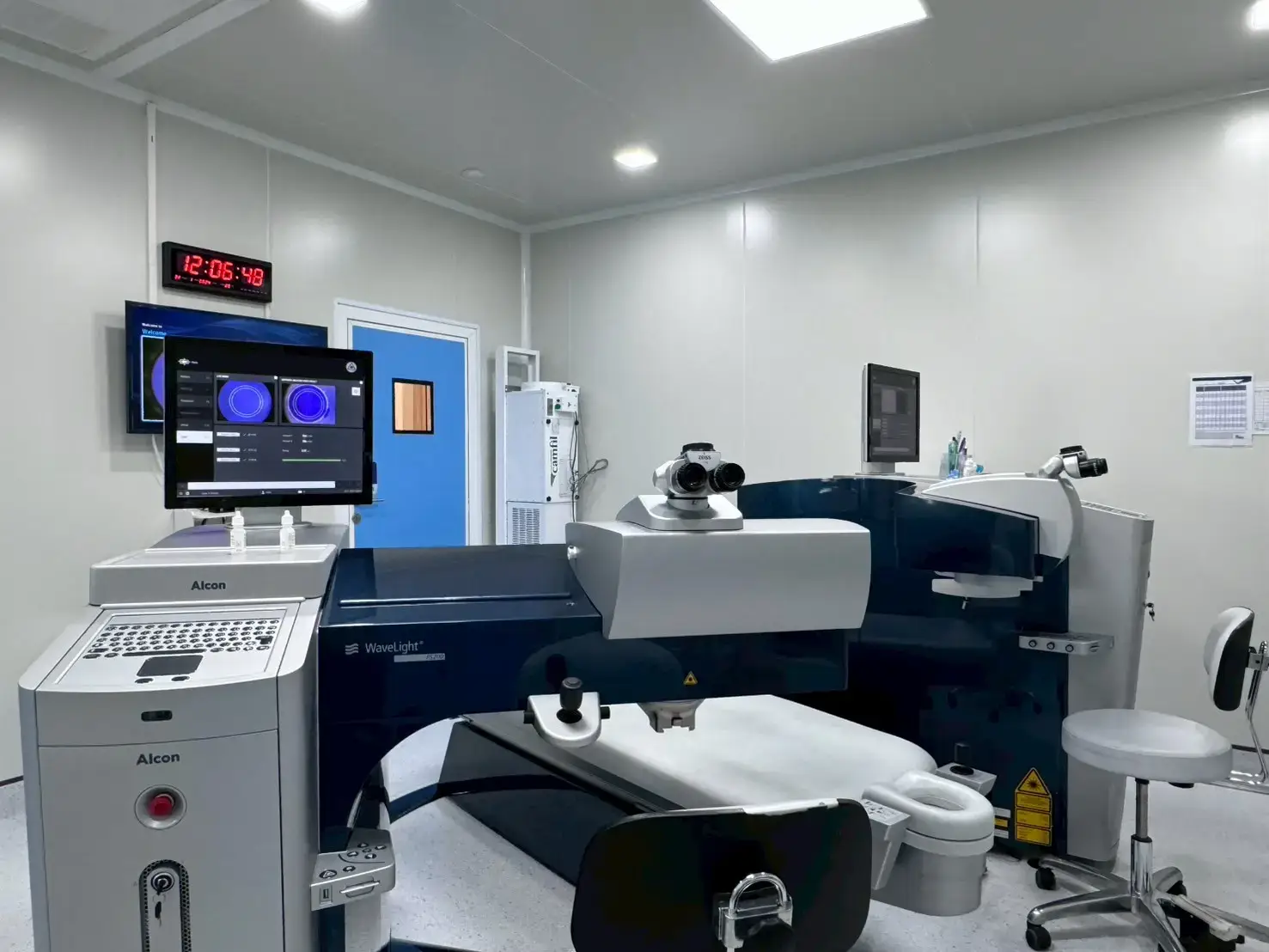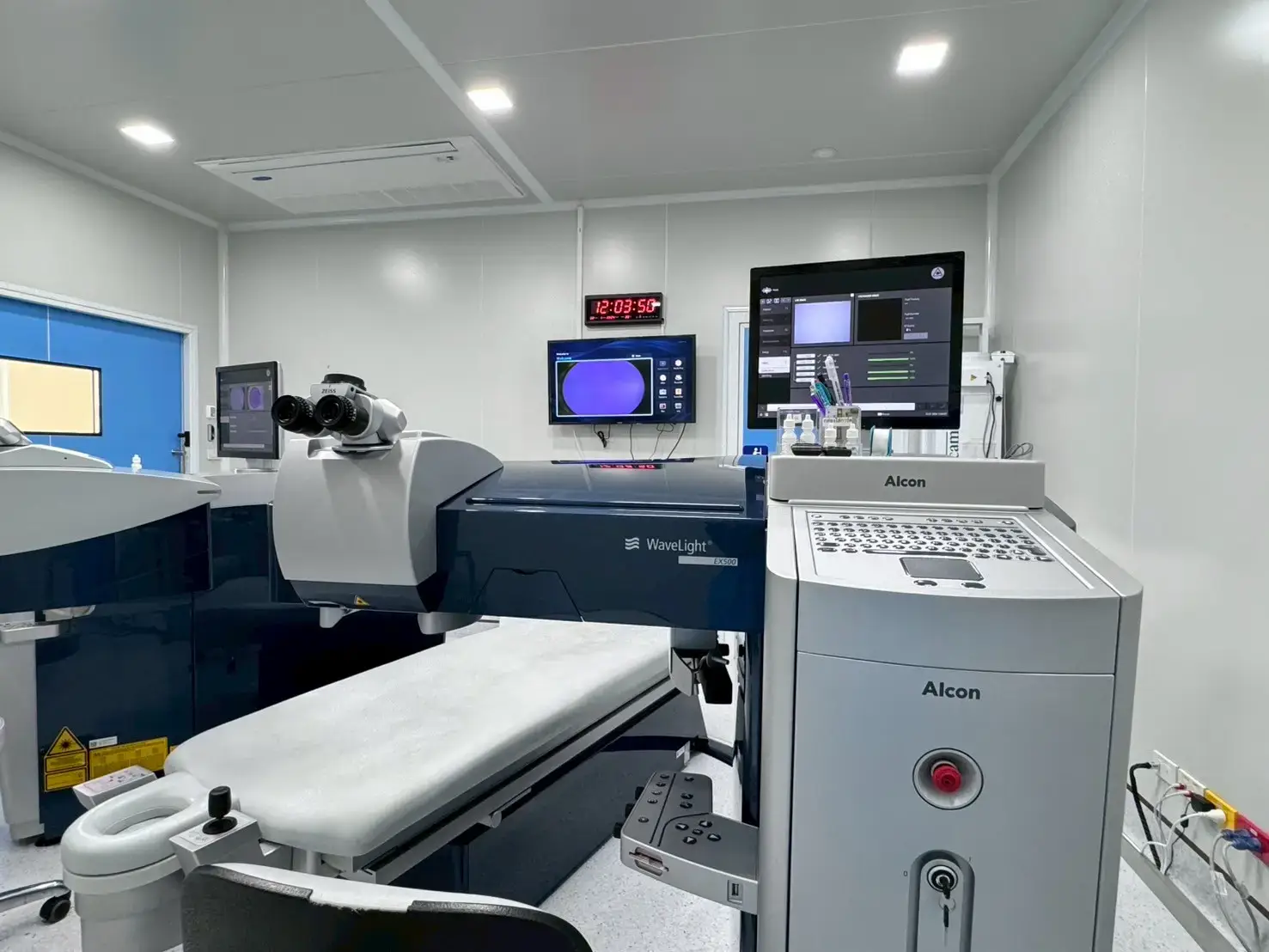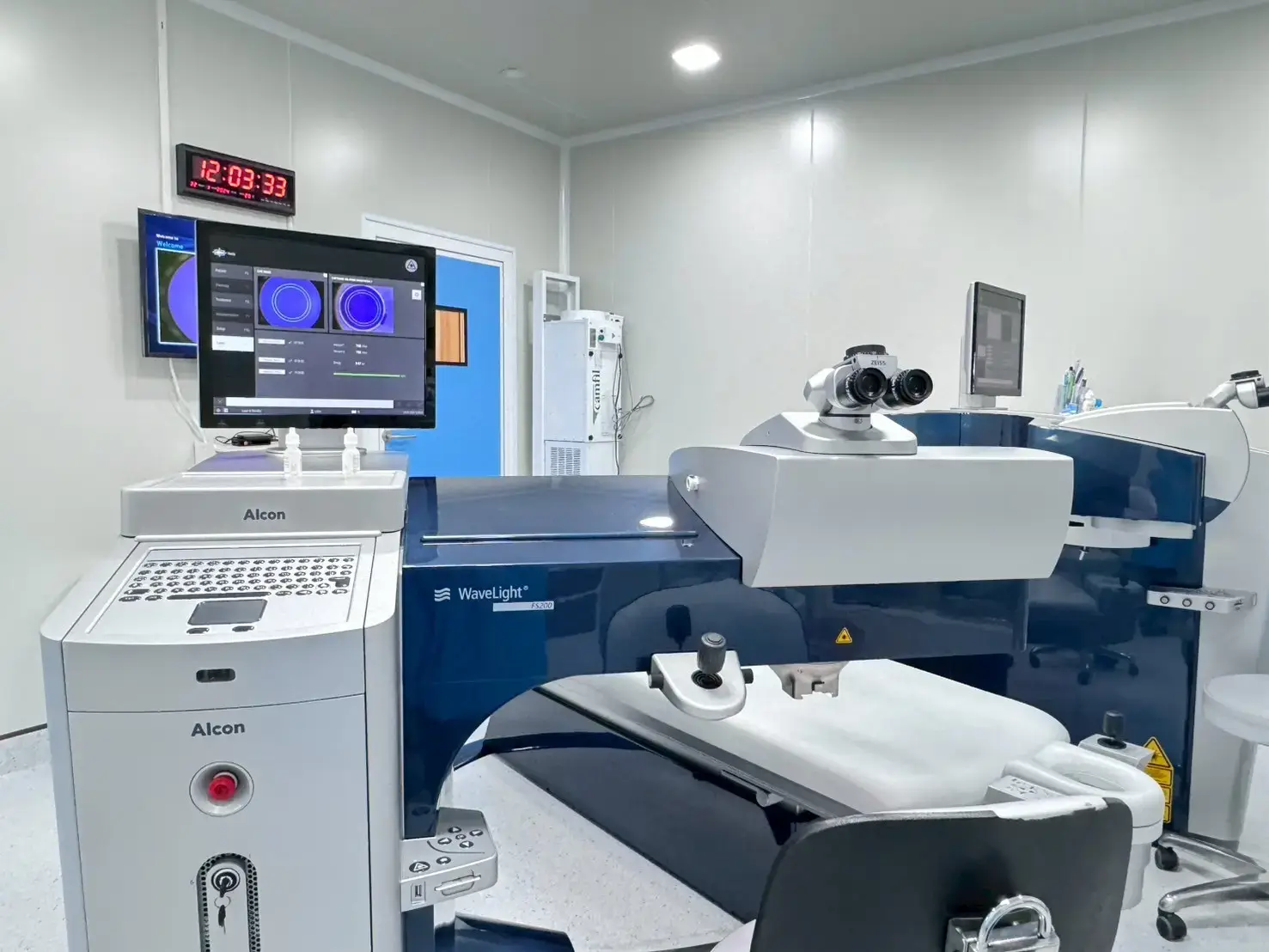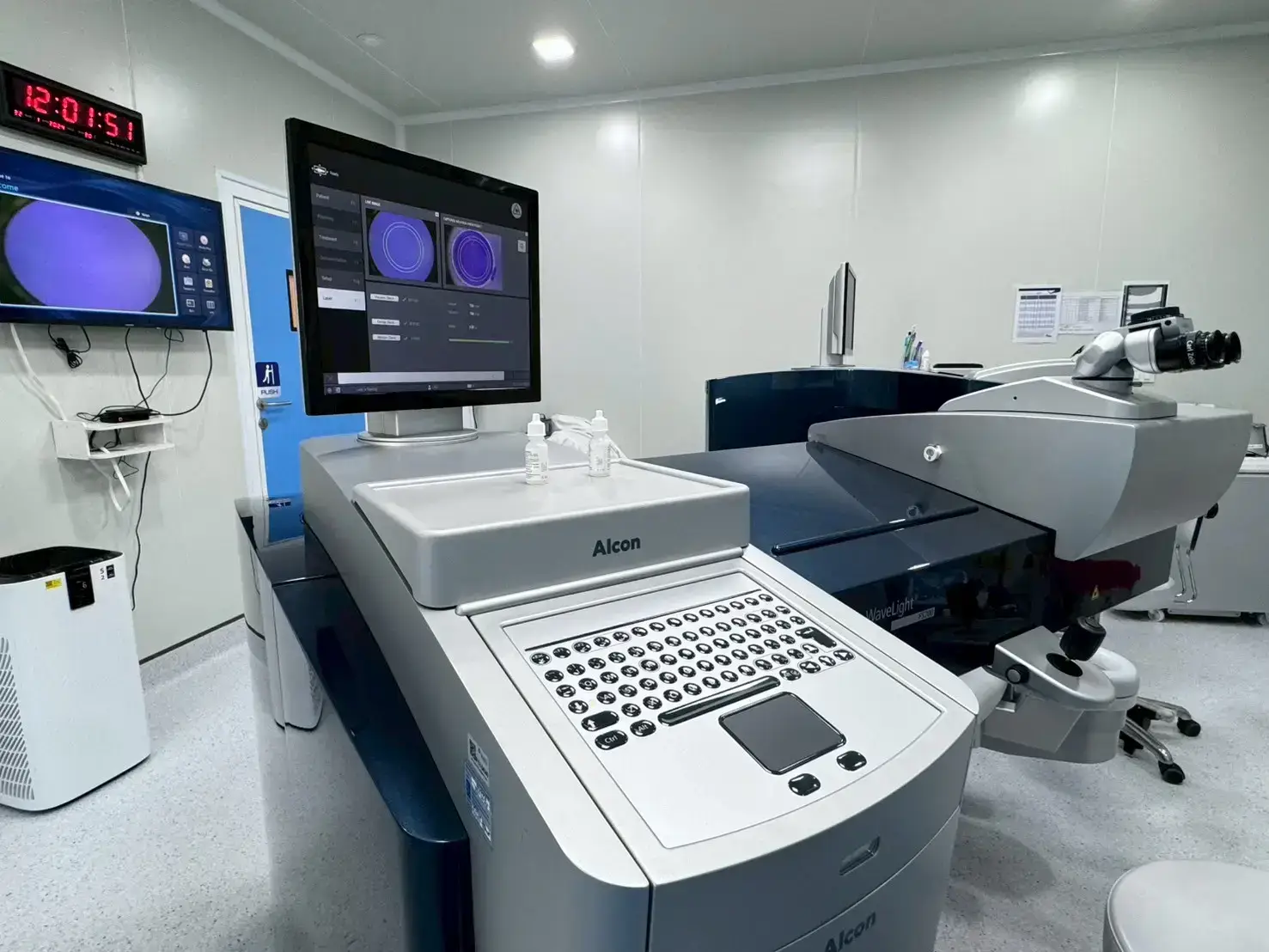- LASIK Center
WHAT IS LASIK
An alternative choice to restore brightness to your eyes through a comprehensive and attentive pre-LASIK evaluation.
Conducted by highly skilled ophthalmologists with extensive experience, supported by state-of-the-art equipment and technology that meets international standards —all specifically designed for the diagnosis and treatment of eye conditions.
Helping you break free from the frames —of glasses, of limited vision, of your old way of life— and step confidently into a new world with clarity and grace.
Conducted by highly skilled ophthalmologists with extensive experience, supported by state-of-the-art equipment and technology that meets international standards —all specifically designed for the diagnosis and treatment of eye conditions.
Helping you break free from the frames —of glasses, of limited vision, of your old way of life— and step confidently into a new world with clarity and grace.
LASIK (Laser In Situ Keratomileusis) is a surgical procedure to correct refractive vision problems, including nearsightedness, farsightedness, and astigmatism, by using a laser called an Excimer Laser to reshape the curvature of the cornea.

It is a common vision abnormality in which distant objects cannot be seen clearly, while nearby objects can be seen clearly. The cause may be due to the eyeball being longer than normal or the cornea being too curved.

Farsightedness (Hyperopia) is a condition in which near vision is blurry, but distance vision is clear. In some cases, both near and distant vision may be blurry. It is caused by the cornea being too flat.

Presbyopia, or age-related farsightedness, is a condition in which near vision becomes blurry. It is caused by the deterioration of the eye muscles and the hardening of the eye's lens, commonly occurring in people aged 40 and older.

Astigmatism is a condition in which there is more than one focal point in vision, causing blurred or double vision. LASIK for astigmatism helps reshape the cornea so that light is properly focused.
TYPES OF LASIK PROCEDURES

Femtosecond LASIK (Femto-LASIK)
Femto-LASIK is a bladeless LASIK procedure that treats nearsightedness, astigmatism, and congenital farsightedness by using a laser to separate the corneal layers instead of a blade, followed by reshaping the cornea with another laser. It is highly safe and precise, allowing for a quick recovery of normal vision.

Sub-Bowman’s Keratomileusis (SBK) LASIK
SBK LASIK is a method used to treat nearsightedness, astigmatism, and congenital farsightedness by using a Microkeratome blade to separate the corneal layers, followed by reshaping the cornea with an Excimer Laser to correct refractive errors. After the procedure, it typically results in less dry eye compared to traditional LASIK.
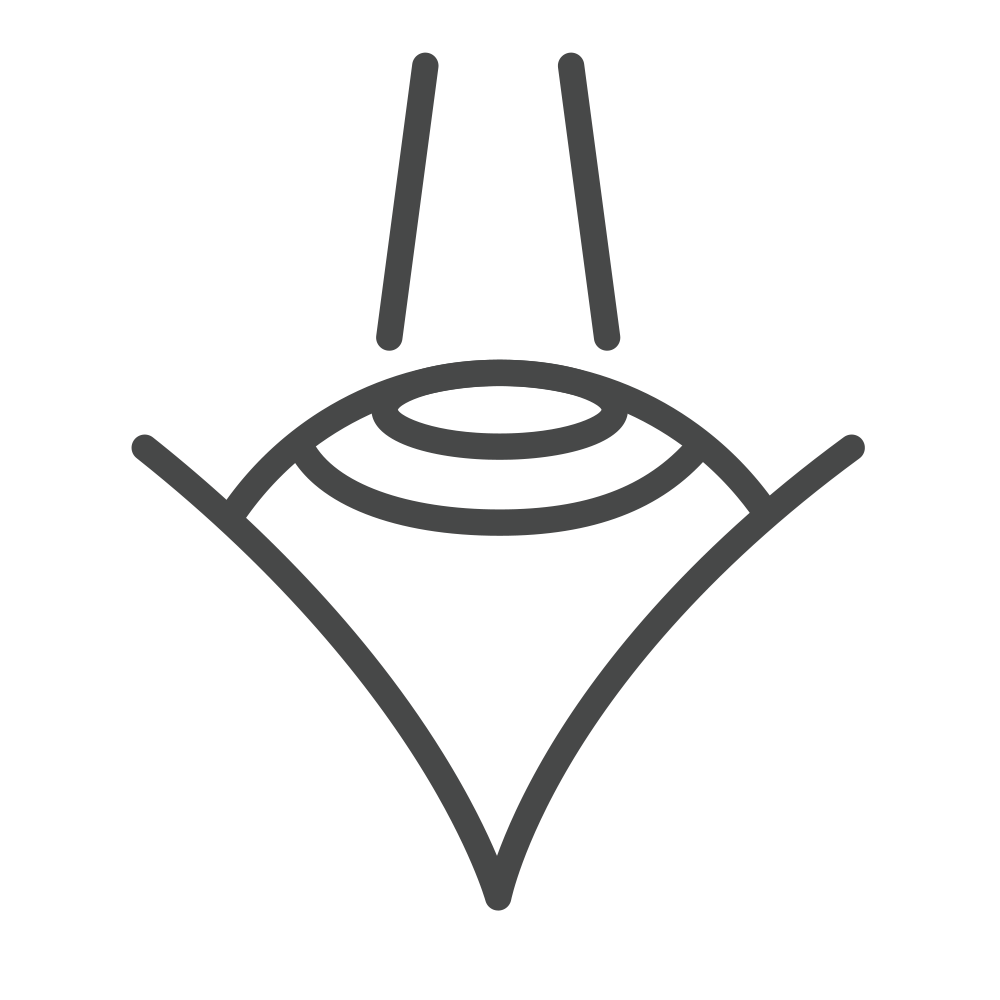
Transepithelial Photorefractive Keratectomy (TransPRK)
TransPRK is a vision correction surgery that does not require creating a corneal flap. It involves using a laser to remove the outer layer of the cornea, followed by reshaping the corneal surface with another laser to correct refractive errors. This method involves no direct contact with the eye and is suitable for those with insufficient corneal thickness for LASIK or those in special professions such as military personnel, police officers, pilots, or individuals concerned about the corneal flap. After the procedure, patients may experience eye discomfort, tearing, and irritation for about 3–5 days, with vision gradually improving over 1–4 weeks.
- LASIK Center
TECHNOLOGY USED
Alcon WaveLight EX500
The Excimer Laser machine from ALCON, Germany, uses advanced technology to correct refractive errors while conserving more corneal tissue, increasing the strength and integrity of the cornea after surgery. It takes only 1.4 seconds to treat -1.00 D of vision. It also features an Eye Tracking System that detects and follows eye movement, allowing for highly accurate correction, along with additional technologies to reduce nighttime glare.
Alcon WaveLight FS200
Femto LASIK uses Femto Second Laser technology with the latest WaveLight FS200 device from ALCON to separate the corneal layers, combined with an Excimer Laser to correct vision. This bladeless procedure increases the potential for successful vision correction, as it allows for thinner corneal flaps compared to blade LASIK, results in smoother incision edges, and promotes faster corneal healing.
Oculus Corvis ST
It is a device that can assess corneal strength using a Scheimpflug camera, capable of capturing corneal movement during measurement. This data is evaluated alongside the eye's physical characteristics, including corneal elasticity, to help screen for risk conditions such as early-stage keratoconus.
- LASIK Center
Why Choose LASIK?
Advantages of LASIK
- 1. Clear vision without relying on glasses or contact lenses
- 2. Reduced risks associated with contact lens use
- 3. Minimal discomfort and quick recovery
- 4. High safety and precision
- 5. Increased confidence
- 6. Permanent correction of refractive errors
SUITABLE CANDIDATES FOR LASIK TREATMENT
- Age 18 or older with stable vision for at least one year
- No corneal diseases such as keratoconus or severe dry eye, and no other eye conditions like retinal degeneration, nor systemic diseases that impair wound healing (e.g., SLE, severe dry eye with dry mouth [Sjögren’s], or other immune-compromising disorders)
- Not currently pregnant or breastfeeding
- Thorough understanding of the LASIK procedure and realistic expectations
PREPARATION BEFORE UNDERGOING LASIK TREATMENT
- Stop wearing soft contact lenses for at least 5 days, and hard or rigid–gas-permeable lenses for at least 14 days before the evaluation.
- On surgery day, shower and wash your hair; do not wear makeup, spray products, roll-on deodorant, or perfume.
- Wear a front-button shirt or clothing that can be removed easily to simplify changing after the procedure.
- If you take any regular medications, consult your doctor at the evaluation visit about whether you should stop any of them.
- Avoid alcoholic drinks before the surgery.
- Do not drive yourself to the evaluation or on surgery day, as pupil dilation during the exam will blur vision for 4–6 hours.
- Discontinue acne medications at least one month before the evaluation and surgery, because they can cause dry eyes and affect the accuracy of the eye measurements.
POST-LASIK CARE
- Rest your eyes for the first 24 hours after surgery
- Avoid getting water or foreign objects in your eyes during the first 7 days
- Refrain from exercising for 7 days after the procedure
- Avoid applying makeup around the eyes for 7 days after the procedure
- Wear eye shields while sleeping for 7 days after the procedure to prevent accidental eye rubbing
- Get adequate rest
- Use eye drops as prescribed by your doctor
- Wear sunglasses outdoors for about 1–4 weeks
RECOVERY PERIOD AFTER PROCEDURE



